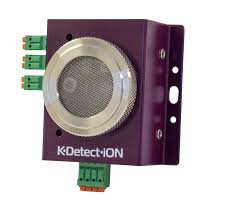Kentec Electronics has introduced the K-Detect-iON, a flammable gas detector specifically engineered for early hydrogen detection in Battery Energy Storage Systems (BESS). This new detector is designed to enhance fire protection by identifying hydrogen gas release at the earliest stages of battery malfunction, allowing for rapid activation of ventilation and suppression systems.
According to Kentec, the K-Detect-iON requires no calibration for at least ten years, significantly reducing maintenance demands. The detector integrates seamlessly with the company’s Sigma ZXT extinguishing panels, enabling live monitoring of hydrogen gas concentrations in remote energy storage installations.
The K-Detect-iON is engineered to detect hydrogen gas before it reaches critical levels, aligning with the typical progression of BESS fire events—starting with cell failure, followed by gas release, and potentially leading to ignition. Early detection is essential to prevent escalation and to initiate protective actions such as extraction fan activation or suppression deployment.
Kentec has confirmed that the detector is compatible with both European and U.S. regulatory environments. The Sigma ZXT version for the EN market complies with EN54 Part 2, EN54 Part 4, and EN12094 Part 1, while the UL version is pending certification to UL 864 (10th Edition), FM Standards, and NFPA 855. This broad regulatory compatibility allows deployment of the same core technology across international markets without modification.
The K-Detect-iON is capable of detecting hydrogen gas across a 0–100% Lower Explosive Limit (LEL) range. It also features a wide operating temperature range from -30°C to 75°C, with a tolerance of ±0.48°C. The unit is built to respond rapidly in extreme environmental conditions, helping to reduce false alarms and support accurate, early intervention.
When integrated with the Sigma ZXT platform, the detector can automatically initiate site-specific responses. This includes triggering extraction fans to reduce hydrogen concentrations and activating fire suppression systems where required. Such automation is particularly valuable for remote BESS locations, where delays in manual intervention can increase risk.
Additional features of the K-Detect-iON include support for a Volatile Organic Compound (VOC) detection range of 0 to 500 VOC, three programmable relay outputs, and both single and multi-sensor configuration capabilities for scalable system design. The detector also supports Modbus RTU communication via RS485, ensuring flexible integration within modern fire and safety systems.
With the launch of K-Detect-iON, Kentec aims to deliver a next-generation hydrogen detection solution tailored to the demands of modern energy storage environments, combining long-term reliability, advanced automation, and multi-standard compliance into one robust platform.


